2014 AAO CONVENTION
The Big Easy and All that Jazz
After Hurricane Katrina forced a change of venue to Las Vegas in 2006, the AAO is finally returning to New Orleans April 25-29. While parts of the city have been slow to recover from the disastrous flooding, the main draws for tourists—music, cuisine, and architecture—are thriving. With its unique blend of European, Caribbean, and Southern cultures and styles, New Orleans remains a destination city for travelers from around the United States and abroad.
Transportation and Weather
The renovated Ernest N. Morial Convention Center opened a new grand entrance and Great Hall in 2013. Its location in the Central Business District is convenient to both the French Quarter to the north and the Garden District to the south. Museums, galleries, and other attractions, as well as several of the convention hotels, are within walking distance, as is the Riverfront Streetcar line that travels along the Mississippi into the French Quarter.
Similar articles from the archive:
- 2013 AAO CONVENTION Rediscovering Philly February 2013
- 2012 AAO CONVENTION Paradise Revisited February 2012
- 2011 AAO CONVENTION Toddlin' Back to Chicago February 2011
Louis Armstrong International Airport is about 15 miles from the city center. A shuttle with service to many hotels is $20 one-way; taxi fares are about $35 from the airport, although fares will be a little higher than usual around town because of the annual Jazz Festival. Amtrak passengers arrive at Union Terminal, centrally located a few minutes by taxi from the Convention Center and downtown hotels.
April and May are usually mild to warm, but an umbrella would be advisable for anyone planning to be out and about this walkable city. One of the convenient Visitor Information Centers is a good first stop; the Basin Street Station Visitor Information & Cultural Center is housed in the restored Southern Railway Station, located at the edges of the French Quarter and the historic neighborhoods of Tremé and Iberville. Other French Quarter visitor centers are at 529 St. Ann St., 2020 St. Charles Ave., and the Jean Lafitte Center at 419 Decatur St.
Mobile apps devoted to the Crescent City’s attractions, nightlife, and dining spots can be downloaded from www.neworleansonline.com/tools (some free, some for a fee).
Tours
Get to know popular attractions in the city center by using the hop-on-hop-off double-decker City Sightseeing buses, which make the rounds of a dozen attractions and convenient locations every 30 minutes (daily and weekly passes are available). Fares for the Regional Transit Authority’s buses and streetcars are $1.25 per trip; one- or three-day passes can also be purchased (www.norta.com). The four- and six-person mule-drawn carriages rolling through the French Quarter from 8 a.m. to midnight can be engaged at Carriage Tours in Jackson Square. Gray Line Tours offers excursions within the city and beyond by bus or boat. Capital City Trolleys provides bus, airboat, and “ghost” tours, along with a visit to the Villalobos Rescue Center for pit bulls, featured on Animal Planet. Tours by Isabelle are small-group, personalized trips through the city, antebellum plantations, and Cajun Country swamps; Spanish- and French-speaking guides can be arranged in advance. Jean Lafitte Swamp & Airboat Tours traverse a historical park and nature preserve, a 30-minute drive south of the city (children 8 and older are allowed on the airboats).
On the waterfront, Steamboat Natchez, a true steam-powered vessel launched in 1975, features antique fittings from historic vessels and a 32-note steam calliope; daily brunch and dinner jazz cruises depart from the Toulouse Street Wharf in the French Quarter. The Paddlewheeler Creole Queen, built in 1983 and propelled by an authentic (but diesel-electric-powered) paddlewheel, launches every afternoon from the Port of New Orleans for narrated cruises to the site of the 1815 Battle of New Orleans (Chalmette Battlefield) and in the evening transforms to a jazz cruise vessel, offering a Creole buffet and cocktails.
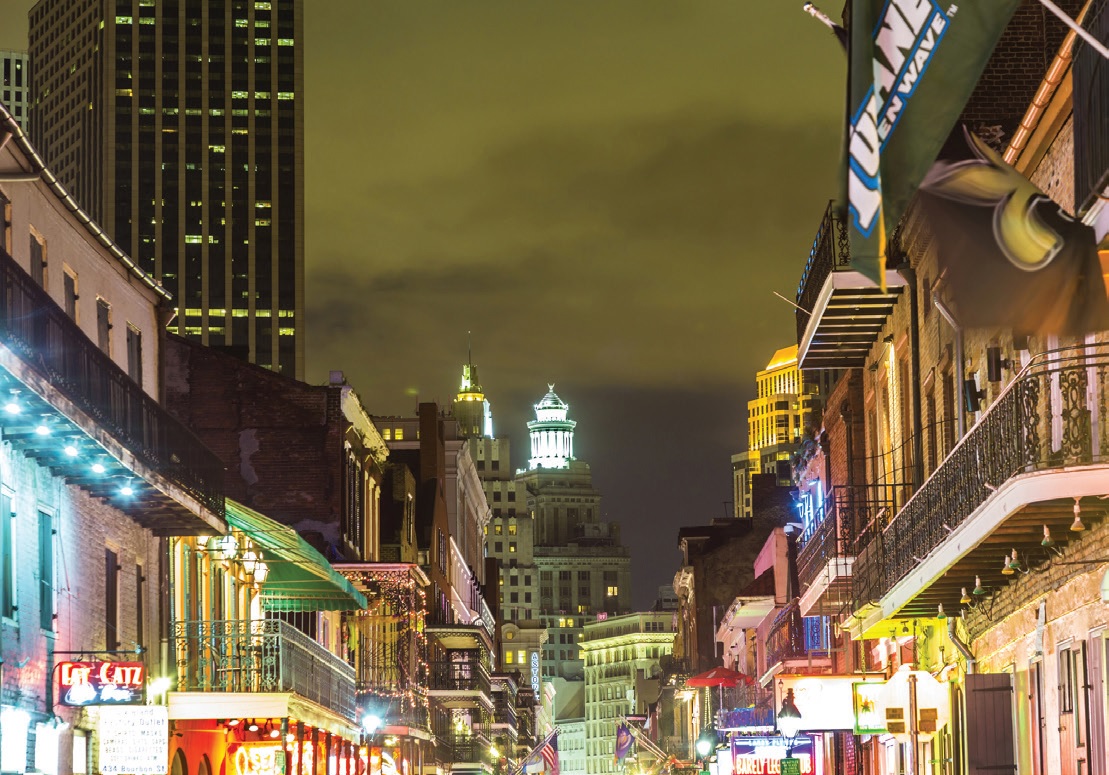
Bourbon Street in the French Quarter at night. Photo © Jorg Hackemann, Dreamstime.com.
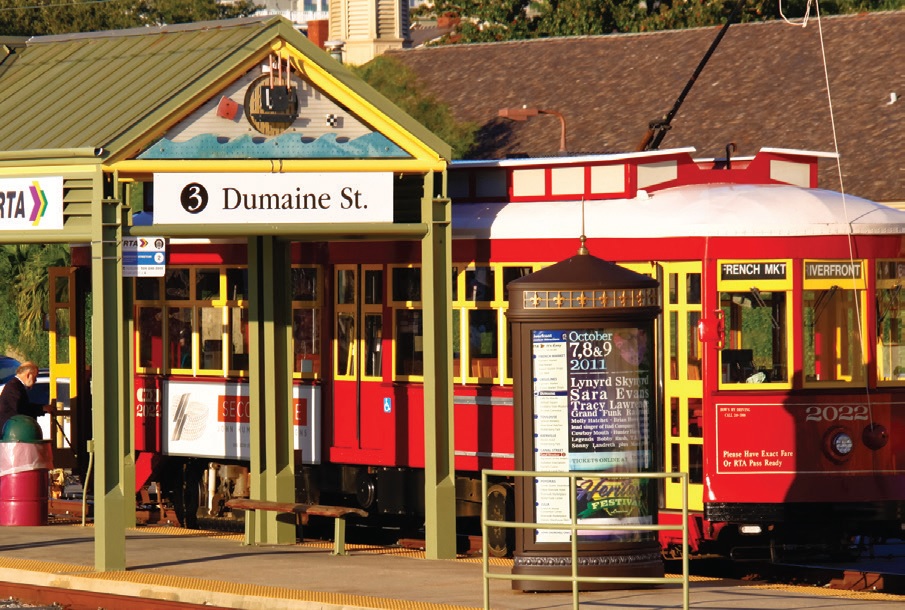
The Riverfront Streetcar line runs along the Mississippi into the French Quarter. Photo © Lawrence Weslowski Jr., Dreamstime.com.
Performances
Although music is always in the air, the New Orleans Jazz and Heritage Festival, held at the Fair Grounds Race Course north of the French Quarter, is an annual highlight, drawing huge crowds to multiple stages. This year’s festival will run during the weekends of April 25-27 and May 1-4; headliners include Eric Clapton, Bruce Springsteen, Christina Aguilera, and Santana, backed by dozens of other musicians and bands encompassing “every style associated with the city and the state”. More than 100 Louisiana-based vendors will sell restaurant-quality local delicacies. Visitors should look into tickets and transportation options as early as possible.
During and between Jazz Fest weekends, live-music choices abound. The renowned Preservation Hall offers three nightly performances for all ages, and the Louisiana Music Factory, a French Quarter music store, features live, in-store performances. The Pfister Sisters bring their traditional jazz vocal harmonies to Music at the Mint—that’s the Old U.S. Mint, part of the Jazz National Historical Park—on April 25. Progressive rock band Moe presents two performances at the Civic Theater on April 25 and 26; radio station WWOZ stages its annual benefit concert, Piano Night 2014, on April 28 at the House of Blues, which also hosts George Clinton & Parliament Funkadelic on April 27. Wednesday at the Square, a free 12-week concert series at Lafayette Square, goes on rain or shine; a special all-star line-up for April 30 includes Eric McFadden, Jerry Joseph, Norwood Fisher, and Eric Bolivar. Mardi Gras World hosts the daylong “Fiya Fest 2014 Crawfish Boil and Benefit for the Roots of Music” on May 2. To keep track of the multitude of live-music venues during the 10 days of Jazz Fest, check the “Nearly World Famous Jazz Fest Grids”, updated daily (www.jazzfestgrids.com).
Attractions
Mardi Gras will be long past by April, but a few venues celebrate year-round. The Mardi Gras World facility in the port district lets visitors watch the real artists at work on costumes and floats for next year’s parades while learning about festival history and culture. Free shuttle service is available from the central city and French Quarter. Tremé, the oldest African-American neighborhood in the United States, features the Backstreet Cultural Museum, displaying memorabilia and the city’s largest collection of elaborate and brilliantly colored Mardi Gras Indian costumes. A more high-tech historical presentation of Mardi Gras traditions can be seen in the French Quarter’s Presbytère, with an interactive permanent exhibition called “Mardi Gras: It’s Carnival Time in Louisiana”. Harrah’s New Orleans offers a “full dose of the Big Easy” in one spot: table games, poker, and slot machines surrounded by French Quarter décor, Mardi Gras floats, and strolling brass bands.
The full tableau of New Orleans history—from the Battle of New Orleans to the world of voodoo and a haunted dungeon—is presented by 154 life-size wax figures at the Musée Conti Wax Museum. The National World War II Museum, the official U.S. museum for that conflict, showcases artifacts, vehicles, oral histories, and theatrical presentations in multiple large pavilions. Historic Tremé is the setting for the New Orleans African American Museum; the New Orleans Pharmacy Museum is housed in the French Quarter apothecary of the country’s first licensed pharmacist.
The New Orleans Museum of Art and beautifully landscaped Sydney and Walda Besthoff Sculpture Garden are found in City Park. Along with its extensive collection of American, French, African, and Japanese works, the museum is showing “Photography and the American Civil War” through May 4. Closer to the center of town, the Ogden Museum of Southern Art focuses on the art, history, and culture of the American South with works by Walter Anderson, Christopher Clark, Herbert Singleton, and William Woodward. Newcomb Art Gallery, on the campus of Tulane University, is exhibiting “Early Modern Faces: European Portraits 1480-1780”—a collection of paintings on loan from Houston’s Sarah Campbell Blaffer Collection.
For a more offbeat museum outing, the French Quarter’s Historic Voodoo Museum features voodoo dolls and other artifacts, psychic readings by a voodoo priestess, and gris-gris bags (voodoo talismans, sold as “curios” only). The museum offers a Voodoo Cemetery walking tour including Congo Square and the historic St. Louis Cemetery No. 1, led by guides who can answer questions about jazz funerals, zombies, and voodoo’s influence on the local Catholic Church.
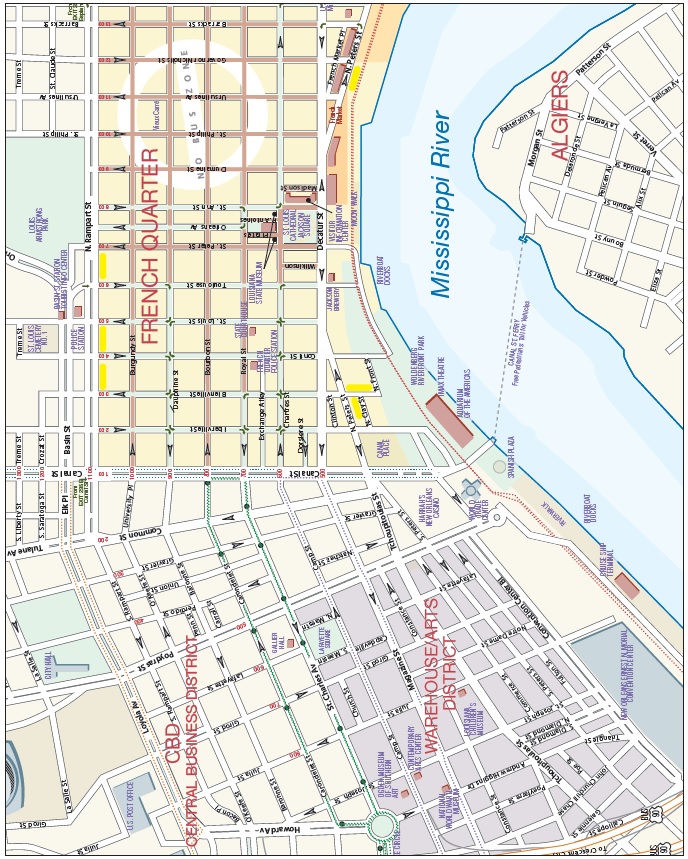
The Audubon Nature Institute operates 10 museums and parks in the area, including the Audubon Aquarium of the Americas, Audubon Butterfly Garden and Insectarium (check the website for a link to the mesmerizing “ant cam”), Audubon Park, Audubon Zoo, and Entergy IMAX Theatre, which will be showing “Penguins 3D” and “Madagascar, Island of Lemurs 3D” during the convention.
St. Louis Cathedral, a much-photographed icon on Jackson Square, is open for self-guided tours when masses or other functions are not going on. Nearby, the extensive Louisiana State Museum collection includes seven historic and iconic French Quarter buildings: 1850 House, refurbished to depict middle-class family life in the antebellum era; the Greek Revival Arsenal, built in 1839; The Cabildo, focusing on early Louisiana history; the Old U.S. Mint, now incorporating the Louisiana Historical Center, the New Orleans Jazz Club Collection, and a performing-arts center; the Presbytère; Creole House and Jackson House; and Madame John’s Legacy, one of the few major buildings that escaped the great fire of 1795.
For close-up appreciation of the region’s unique architecture, visit the 18th-century Creole colonial Pitot House, now the headquarters for the Louisiana Landmark Society. The lavish, Federal-style Hermann-Grima House was built in 1831, during the “Golden Age of New Orleans”; Gallier House, a Creole townhouse whose owner was fascinated by engineering and architectural innovation, is also in the French Quarter, as is the House of Broel Victorian Mansion. Longue Vue House and Gardens, the former Metairie residence of art collectors Edith and Edgar Stern, features 20th-century artworks by Picasso, Gabo, Laurens, Hepworth, and Soto; each exterior wall of the house is in a different style, with its own garden.
Outside the city in Vacherie, visit Oak Alley Plantation, the “Grande Dame of the Great River Road”, one of the few remaining stately plantation homes in the region. Across the Mississippi from downtown New Orleans is the city’s second-oldest neighborhood, Algiers Point. Take the ferry at the foot of Canal Street (free for pedestrians) and walk through the business district and neighborhood streets to see a wide assortment of single-family homes in styles ranging from French Colonial Plantation to Creole Cottage to Eastlake Shotgun Double.
Dining
New Orleans is legendary for its Creole cuisine, as epitomized by Clancy’s Restaurant (Uptown), Commander’s Palace (Garden District), Emeril Lagasse’s Delmonico (Garden District), K-Paul’s Louisiana Kitchen (French Quarter), and The Pelican Club (French Quarter). Expect rather expensive menus in plush surroundings.
For trendier, more contemporary Cajun-style cooking, try Bayona (French Quarter), Boucherie (Carrollton), Brigtsen’s Restaurant (Riverbend), Cochon Restaurant (near the Convention Center), Dick & Jenny’s (Uptown), Eleven 79 (Garden District), Jacques-Imo’s (Carrollton), Pêche Seafood Grill (near the Convention Center), or Toups Meatery (near City Park).
Other top restaurants serving more international French-American fare include August (near the Convention Center), Coquette (Garden District), Gautreau’s (Uptown), GW Fins (French Quarter), Herbsaint (Warehouse District), Lilette (Uptown), and Stella! (French Quarter). Those seeking ethnic dining adventures may want to head for Cane & Table (Cuban, French Quarter), La Boca (Argentine, Warehouse District), Lilly’s Café (Vietnamese, Garden District), Maïs Arepas (Colombian, Faubourg Lafayette), or Pho Tau Bay Restaurant (Vietnamese, Gretna). Or support at-risk youth by chowing down on soul food at the nonprofit Café Reconcile (Faubourg Lafayette).
Shopping and Galleries
The Warehouse District, adjoining the Convention Center area, houses the region’s thriving contemporary-arts movement. In April, Soren Christensen Gallery will spotlight the landscapes of Eric Abrecht, while Octavia Art Gallery offers an exhibition of Nall’s Southern-European fusion. May 3 is the date for the monthly openings in and around Julia Street, including Callan Contemporary (paintings and sculpture), Jonathan Ferrara Gallery (an exhibition of new paintings by Gina Phillips), and Arthur Roger Gallery (works by David Bates, Dale Chihuly, and Lin Emery). Three notable galleries on neighboring Magazine Street include Sibley Gallery (regional and national contemporary artists), Guthrie Contemporary (five photographers in an exhibit called “PhotoNOLA”), and Kevin Gillentine Gallery (works by the owner and other local artists). Between Audubon Park and the Lower Garden District, Magazine Street is a six-mile-long stretch of antique stores, art galleries, craft shops, boutiques, and restaurants.
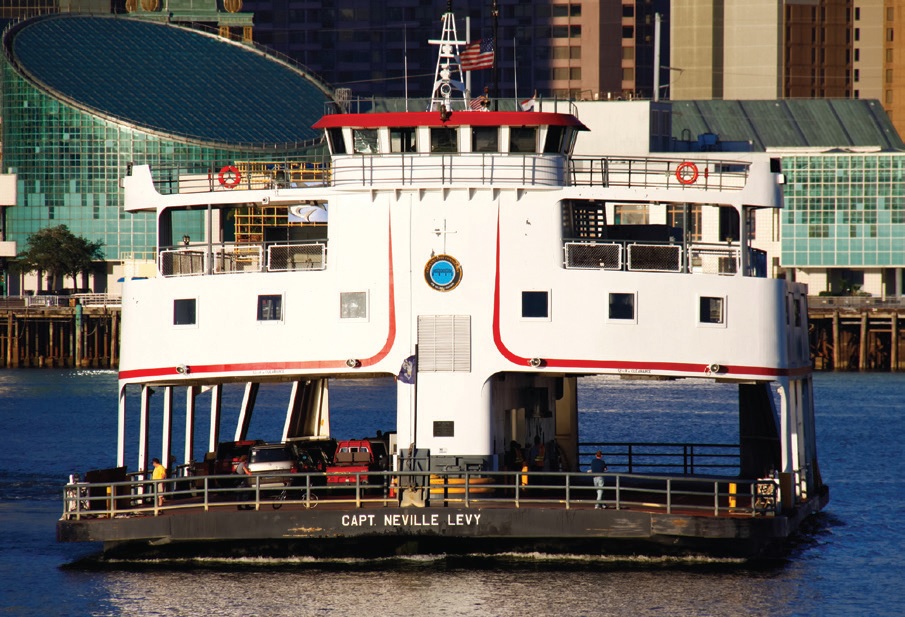
The popular Algiers Ferry traverses the Mississippi River from the Canal Street dock to the historic Algiers neighborhood. Photo © Lawrence Weslowski Jr., Dreamstime.com.
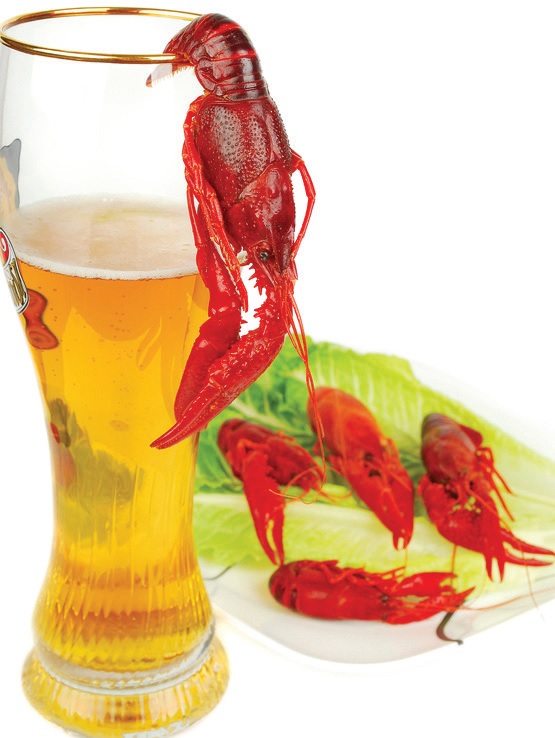
Beer and crawfish. Photo © Ekaterina Staats, Dreamstime.com.
French Quarter sites and activities are so diverse that many New Orleans visitors spend their entire trips in this neighborhood (www.frenchquarter.com). Highlights for shoppers include the Cigar Factory (two locations; watch cigars being rolled at the Decatur Street shop), Erzulie’s Authentic Voodoo (handmade soaps, candles, and psychic readings), Hové Parfumeur (fine fragrances for men and women), and Kabuki Design Studio (one-of-a-kind hats for wearing and collecting). The century-old, 25,000-square-foot M.S. Rau Antiques on Royal Street is a landmark for discerning collectors worldwide.
The French Market open-air mall, the oldest public market in the country, resembles a European bazaar with its art stalls, shops, eateries, flea markets, farmers’ market, and, of course, music (take the Riverfront Streetcar from the Convention Center). Other major shopping centers include Riverwalk Market Place (with a grand reopening as The Outlet Collection scheduled for early spring) and the Shops at Canal Place (featuring Saks Fifth Avenue, Gucci, and local confectioner Blue Frog Chocolates).
Sports and Recreation
Golf fans can see Billy Horschel defend his Zurich Classic championship April 24-27 at TPC Louisiana in Avondale, 15 miles west of the city center. The Pete Dye-designed course, part of the Audubon Golf Trail, reopens to the public April 29. Other worthy courses within a reasonable distance include English Turn Golf and Country Club and the century-old Audubon Park Golf Course in the city, Stonebridge Golf Club in nearby Gretna, and Riverlands Golf & Country Club in La Place.
For cyclists, The American Bicycle Rental Company offers a nighttime bike tour of the “Wicked French Quarter”; Bike NOLA and Crescent City Bike Tours rent out bikes in the French Quarter. To apply your pedaling skills on water, take out a four-seater pedal boat and explore the bayous and lagoons of Big Lake at City Park. Chartered fishing trips over the inland waters of the Louisiana Delta, about a half-hour’s drive south of New Orleans, are offered by the well-regarded Jean Lafitte Fishing Charters and Griffin Fishing Charters; both will pick up and return guests who are staying in the city.

